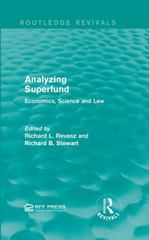Question
1. Suppose that Linda's Strawberry farm has the following short-run cost table (where quantity is measured in pounds). Q TC FC VC MC ATC AVC
1. Suppose that Linda's Strawberry farm has the following short-run cost table (where quantity is measured in pounds).
| Q | TC | FC | VC | MC | ATC | AVC |
| 0 | 10,000 | ---- | ---- | ---- | ||
| 1000 | 5000 | |||||
| 2000 | 19,000 | |||||
| 3000 | 5 | |||||
| 4000 | 7.5 | |||||
| 5000 | 5.4 |
a. What is the total cost of producing zero strawberries?
b. What is the variable cost of producing 2000 strawberries?
c. What is the average total cost of producing 3000 strawberries?
d. What is the marginal cost of producing 4000 strawberries?
e. What is the variable cost of producing 5000 strawberries?
f. If Linda is experiencing economies of scale, what can we say about the slope of her long-run average total cost curve? Why might Linda be experiencing economies of scale?
2. Suppose the market price of strawberries is $6 per pound, Linda's cost are as given in question #1, and assume that she operates in a perfectly competitive market.
a. What is Linda's profit maximizing quantity (in thousands)? What is her profit at that level of output?
b. In the short-run, should Linda shut down or continue to operate?
c. How do you know that Linda is not in long-run equilibrium? Note that there are two possible answers.
d. In the long-run, should Linda shut down or continue to operate? Based on your answers to question #1, is there any way Linda can become more profitable in the long-run?
Step by Step Solution
There are 3 Steps involved in it
Step: 1

Get Instant Access to Expert-Tailored Solutions
See step-by-step solutions with expert insights and AI powered tools for academic success
Step: 2

Step: 3

Ace Your Homework with AI
Get the answers you need in no time with our AI-driven, step-by-step assistance
Get Started


